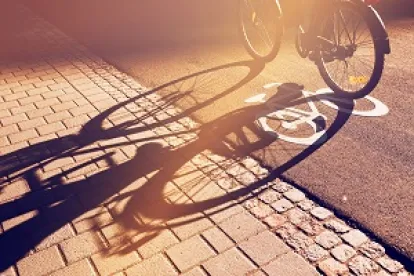In our May 31 article, “Scooters – The Next Mobility Wave”, we talked about how electric scooters such as Lime, Bird, and Spin have been taking cities by storm. We noted how they are many times met with enthusiasm by the younger and more adventurous residents who can easily find a scooter using an app on their phone, unlock it by scanning a code on the handle, and off they go. On the other hand, cities and municipalities, are cautious to embrace the new technology (sound familiar?), frequently at the behest of the older or less technologically adept residents. Often, these cities cite a host of problems, including pedestrian injuries, people riding on sidewalks, riders not wearing helmets and unused scooters blocking walkways and critical access to curb space. Across the country, cities’ approaches to handing these new forms of transit have been mixed, at best, and convoluted at worst.
In many cities, these scooters are dropped off in the dark of the night, appearing with the morning dew, without warning or an offer of assistance to cities or the residents. As a result, it’s been the Wild West for the adventurous scooter pioneers, navigating potholed streets and pedestrian laden sidewalks as these scooters hit speeds close to 15 mph. Scooter companies have, in many instances, hoped cities will simply accept these new transit devices into the fabric of their urban infrastructure without much of a fight. But, cities have been fighting back and now scooter companies are starting to take notice.
In Ann Arbor, Mi, the city council provided Bird with notice that their scooters currently violate city ordinances that prohibit the use of electric scooters on sidewalks and in bike-specific travel lanes, but noted that they are allowed on streets up against the right-most curb. That said, an Ann Arbor spokeswoman told the Detroit Free Press that “the scooters’ very essence violated a city ordinance [noting that] motorized vehicles cannot be used on sidewalks or impede public right-of-way.” The spokeswoman continued by noting that “Scooters also cannot be parked on roads, sidewalks or bike paths and must be clear from driveways, access ramps and fire hydrants.” As a result, the city has taken the approach of confiscating any scooter currently left in the city, and locking them in a secured trailer on city property.
Similarly, in June and July of this year, the city of Indianapolis sent cease and desist letters to Bird and Lime regarding scooter operations in the city. Indianapolis, rather than outright confiscating the scooters opted to pursue a licensing, stating that is illegal for any scooter company to operate within city limits without a license. While Lime complied with the cease and desist letter within two days, pulling all scooters off the street, Bird waited almost 3 weeks before complying. Moving forward, although Bird notes that “[t]he people of Indianapolis have enthusiastically embraced shared electric scooters,” the city says they will “consider, among other factors, the extent to which the applicant’s operations or the use of the applicant’s Shared Mobility Devices have complied with current law” when considering the approval of a permit, on top of the $15,000 annual licensing fee required.
After experiencing the trials and tribulations opening shop in the “dark of night”, scooter companies are starting to realize creating less issues for cities is likely better than hoping they can simply be ignored. In an attempt to tackle the issues of dangerous and reckless riders, Bird is looking at new technology to keep riders honest and accountable. In San Diego, Bird has partnered with the city to share data on riding habits and now allows consumers to report dangerous riders in the Bird app. Bird and Lime have also looked into modifying the GPS components of the scooters to regulate speeds or disable scooters entirely when entering into high traffic areas. For example, San Diego is considering such limitations on riverwalks and boardwalks where the scooter can be regulated down to a safe speed or stopped entirely, until the rider leaves a pre-determined geofenced area. Additionally, these companies are looking into technologies that can assist with sensing when a scooter is being used on sidewalks, based on certain changes ride conditions, and encourage riders to use roads to avoid pedestrians and congestion.



 />i
/>i

